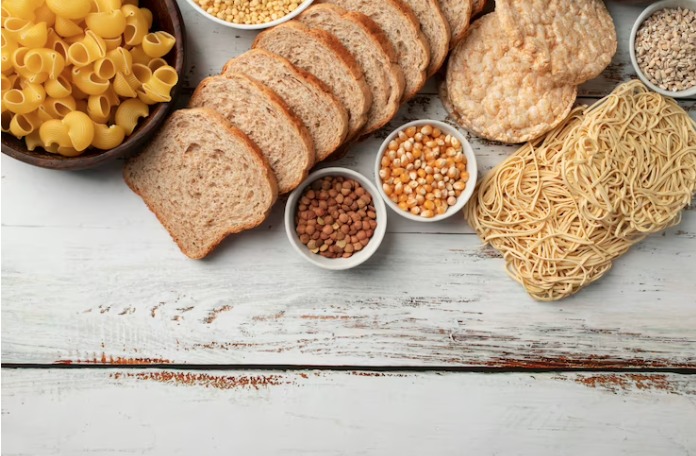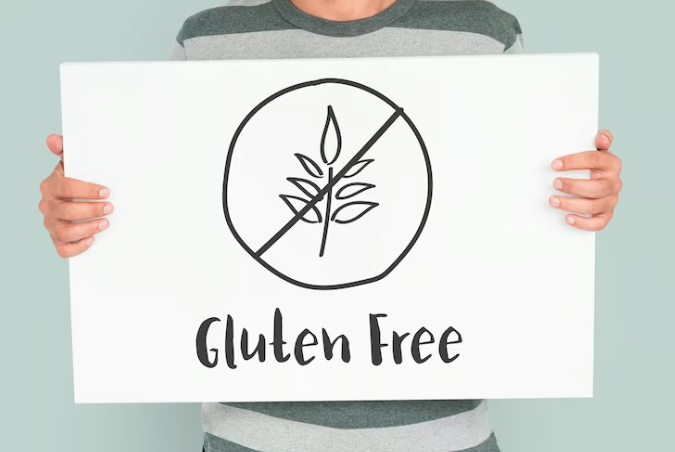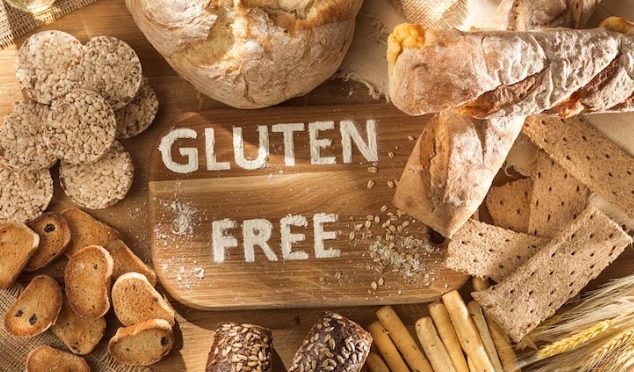The gluten free diet is intended for people with gluten sensitivity or for people who have celiac disease. This form of eating, although restrictive, guarantees quality of life for many people who have these conditions. In this guide we have gathered answers to the main questions related to the term ”gluten free”, from reading labels to indicating places where these products can be found; check out!
What does the term Gluten Free mean?
The term ”gluten free” has been gaining more space both in foods on supermarket shelves, in the media and in the popular imagination, but many people are still unaware of its meaning. This term translated into Portuguese is intended to classify all food ”gluten-free” in its composition.

Gluten is a protein that can be found in its natural form in various grains, such as wheat, barley and rye. Although several foods derive from grains that contain gluten, and for this reason they are the majority on the population’s table, the protein can cause numerous complications for people who are gluten intolerant, those who have celiac disease.
What is celiac disease?
Celiac disease is a chronic condition that some people develop in their immune system in the small intestine, causing damage to the intestinal villi whenever they eat foods containing gluten.
Intestinal villi are small finger-shaped structures that line the small intestine and are responsible for absorbing nutrients from food. People with celiac disease, when ingesting gluten, have their villi damaged. Over time, the immunological reaction to gluten makes them flat and reduces the ability to absorb nutrients, making the individual ill.

The symptoms of celiac disease can vary from person to person and in intensity. However, the most common symptoms include diarrhea, constipation, abdominal pain and bloating. Furthermore, due to impaired nutrient absorption, some symptoms include fatigue, weight loss, anemia, irritability, joint pain and skin problems. His condition is chronic and has no cure.
To maintain a quality of life, people with celiac disease must adopt a diet strictly free of foods containing gluten. With a diet aimed at celiac patients, it is possible to reduce symptoms and recover the intestinal lining for better nutrient absorption.
Gluten-free food labels
In some countries it is not mandatory to indicate on the label that a product contains gluten. Fortunately, in Brazil, it is mandatory for labeled foods to indicate the presence of the protein if the product contains gluten or derivatives of wheat, rye, barley, oats and their hybrids.
This requirement was defined by the National Health Surveillance Agency (ANVISA), according to RDC no. 26/2015, which indicates that all products containing gluten must display the information “CONTAINS GLUTEN” highlighted on the packaging, in legible letters and in contrast to the background. If the food is gluten-free, the packaging must present the information “GLUTEN-FREE” or “ZERO GLUTEN FOOD”.

However, even if the label indicates that the food does not contain gluten, there may often be traces of the protein, making the celiac’s diet even more restricted and causing even greater anguish for family members and the individual with the condition.
As Talita Knupp Souza recalls, after discovering that her daughter Tainá had APLV food allergy (cow’s milk protein allergy), she started to only buy products that indicated the absence of the substance on the label. But “we started to realize that what was on the label wasn’t always valid. And there we learned what cross-contamination was,” he tells us.
The same can happen with gluten: a label may indicate its absence, but it may appear there. In cases like this, there is cross contamination. In celiac disease, cross-contamination occurs when gluten-free foods are prepared or processed in facilities shared with gluten-containing foods. In this way, small amounts of gluten can be transferred from contaminated utensils, equipment or surfaces to food, making it unsafe for consumption by people who need to avoid gluten. For greater food safety for celiac patients, care must be taken when preparing food both at home and in industries and restaurants.
In Talita’s case, her daughter’s condition was the engine that drove the creation of Tainá Alimentos; The industry has a rigorous testing process to prove the absence of gluten and protein in cow’s milk in its products, thus ensuring food safety for other children and adults with celiac disease. Find out the full story by clicking here.
Which processed foods usually contain gluten?
Several foods contain gluten, which makes it even more difficult for people with celiac disease to eat. The most common examples are the following:
- Breads and bakery products — May contain wheat, rye, barley or oat flour not certified as gluten-free);
- Breakfast cereals — Many breakfast cereals contain wheat, barley or rye in their composition. Fortunately, big brands like Nestlé are investing in the creation of these products aimed at celiac patients and people who are sensitive to gluten.
- Wheat-based products — A wide variety of foods go here. From pasta such as pasta, pizza, to pancakes and similar foods.
- Snacks and cookies — Some snacks, pretzels, crackers, cereal bars, muffins and snacks may contain gluten, especially if they are made with wheat flour.
- Sauces and condiments — Soy sauce, Worcestershire sauce and salad dressings may contain gluten in their composition.
- Processed meat-based foods — Sausages, meatballs, pre-made burgers and similar products may contain gluten-containing ingredients such as breadcrumbs or wheat-based additives.
It is important to always check the labels and check whether the food contains gluten or not to avoid discomfort and nutritional problems. Always give preference to companies specialized in the subject that have a rigorous cleaning and testing process that guarantees that the product does not contain gluten in its composition.
What is gluten free for weight loss?
There are several misconceptions related to the term ”gluten free”, including a very worrying idea that claims that a gluten-free diet helps you lose weight. A gluten-free diet is essential for people with celiac disease, as the condition triggers damage to the small intestine after ingesting the protein, as shown above.

It is important to clarify that following a gluten-free diet is not directly related to weight loss. If a person who does not have celiac disease or gluten sensitivity chooses a gluten-free diet to lose weight, it is important to understand that weight loss is not directly linked to eliminating gluten itself. Instead, weight loss may occur due to an overall reduction in caloric intake, replacing certain processed foods, or a general shift to a more balanced and healthy diet. Always consult a doctor or nutritionist to avoid harm to your health.
Can everyone go on a gluten-free diet?
Quite directly: the gluten-free diet is recommended for people with celiac disease or non-celiac gluten sensitivity. The decision to adopt a gluten-free diet should be based on appropriate medical advice and a proper assessment of your individual dietary needs.

Gluten is a source of nutrients in many foods and can provide carbohydrates, protein and fiber. Therefore, excluding it from your diet unnecessarily can result in an inadequate intake of certain nutrients and a less balanced diet. Furthermore, following a gluten-free diet can unnecessarily restrict your food choices.
Where to find gluten-free foods?
Fortunately, awareness about celiac disease is increasing in the food industry, making access to these foods more accessible. Below is a list of some guidelines on where to find gluten-free products:
- Supermarkets: Large supermarket chains have dedicated sections to gluten-free foods. Look for products labeled “gluten-free” on the shelves;
- Natural and specialized product stores: In these establishments you can find a wider variety of gluten-free options, including breads, pastas, cereals, snacks and alternative ingredients. In some of these stores it is possible to discover Tainá Alimentos products, an industry that has a rigorous testing process to avoid any type of cross-contamination; in addition to other reference brands in the production of gluten-free products. Look for natural product stores and stores specializing in gluten-free products in your region, these stores will certainly have several brands of gluten-free products for you to add to your diet!;
- Pharmacies and diet food stores: Some pharmacies and diet food stores may have a selection of gluten-free foods;
- Online shopping: There are many online stores that offer a variety of gluten-free foods.
If you want to know more, check out our content ”Do you have problems with gluten? Find out where to find the best natural products”.

Sign up for our newsletter and stay up to date with exclusive news
that can transform your routine!
Warning: Undefined array key "title" in /home/storelat/public_html/wp-content/plugins/link-whisper-premium/templates/frontend/related-posts.php on line 12
Warning: Undefined array key "title_tag" in /home/storelat/public_html/wp-content/plugins/link-whisper-premium/templates/frontend/related-posts.php on line 13




